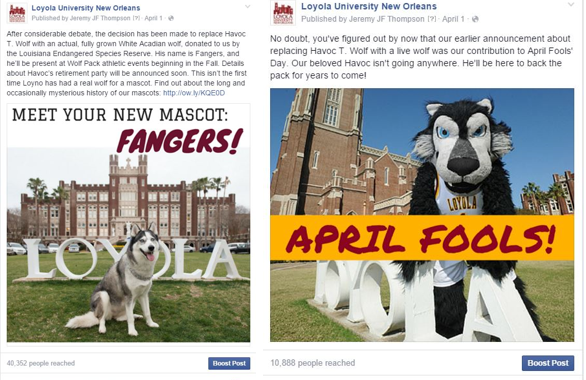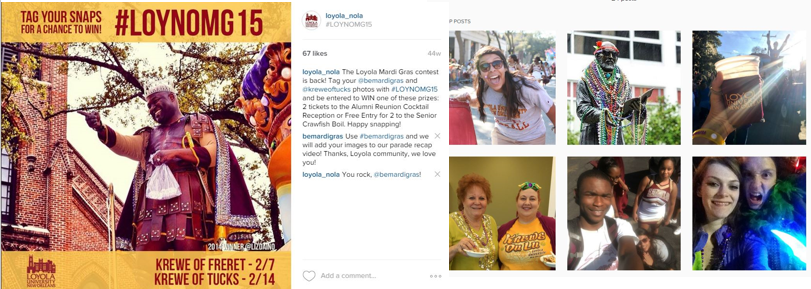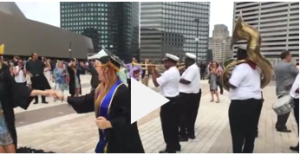Loyola University New Orleans is a traditional university rooted in strong Jesuit values, but the institution is far from old-fashioned in its marketing approach to social media. In an effort to stay relevant with current students, potential students, alumni and the community, Loyola must produce highly engaging content that speaks to a diverse audience. Below are three ways FSC Interactive works with the university to deliver on that need:
Digital Marketing Success at Loyola University New Orleans
1. Leverage New Orleans’ authentic and unique culture
Second line parades are as genuine to New Orleans as red beans and rice on Mondays. Weddings, parades, even funerals celebrate with boisterous brass bands. Loyola saw an opportunity showcase the rich culture of the university while extending the celebration around graduation. FSC Interactive captured the post-graduation second line in a Facebook video that garnered over 65,000 views and a reach of 147,648.
2. Quickly jump on timely trends to maintain relevance
There are certain predictable moments throughout the year that Loyola University can anticipate will create increased attention and engagements. FSC Interactive uses those trending moments to increase reach and engagement among students, faculty and alumni across social platforms including Facebook, Twitter and Instagram. April Fools’ Day is always an exciting time on campus and the past few years’ the administration decided to get in on the pranks with official messaging from the Public Relations department. Last year’s mascot announcement received accolades in Time Magazine, as well as over 50,000 impressions on Facebook alone.

3. Create nostalgia and camaraderie among faculty, alumni and student body
What other cities can boast Mardi Gras and Jazz Fest? These two epic events create lifetime memories. Loyola University prepares content in advance of each and focuses on community management to listen to conversations and engage where appropriate. This effort in social listening connects Loyola to new audiences and extends the momentum around the content. They encourage and incentivize participation with branded hashtags, like #LoynoMG2015 to curate user-generated photos and contests to further celebrate the community.

FSC is honored to be able to do work that is both rewarding and award-winning.
Loyola recently took home two awards from the 31st Annual Educational Advertising Awards, sponsored by Higher Education Marketing Report, for its efforts in social media. The Educational Advertising Awards is the largest educational advertising awards competition in the country. This year, more than 2,000 entries were received from more than 1,000 colleges, universities and secondary schools from all 50 states and several foreign countries.
Read more about the awards in the below press release:
New Orleans, LA. — FSC Interactive, a New Orleans-based digital marketing agency took home two awards from the 31st Annual Educational Advertising Awards, sponsored by Higher Education Marketing Report on behalf of the agency’s work for Loyola University New Orleans.
A Gold award was given for the social media efforts leveraging predictable moments to develop innovative creative content. There are certain moments throughout the year that Loyola University can anticipate will create increased attention and engagements, such as Mardi Gras and Jazz Fest. FSC Interactive uses those trending moments to increase reach and engagement amongst students, faculty and alumni across social platforms including Facebook, Twitter and Instagram.
FSC Interactive also received a Bronze award for a video capturing a New Orleans tradition — the second line — as students celebrated graduation. The timeliness and authenticity of the content resulted in extraordinary organic engagement, increasing awareness for the university and connecting with the Loyola community.
The Educational Advertising Awards is the largest educational advertising awards competition in the country. This year, more than 2,000 entries were received from more than 1,000 colleges, universities and secondary schools from all 50 states and several foreign countries.

